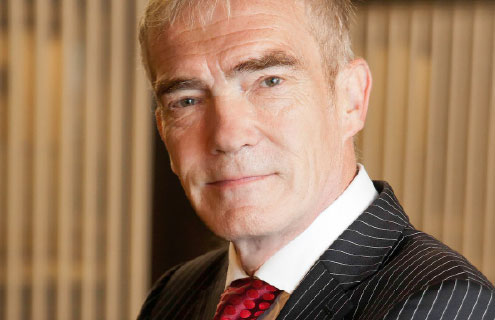SmartStream
Even large banks need just one team responsible for all of their reconciliation requirements, says Darryl Twiggs, executive vice president at SmartStream
The US Securities and Exchange Commission is using SmartStream’s TLM software—was that a big boost for you?
The updated product has been designed from the ground up to be able to reconcile anything. It’s well suited to the larger top-tier banks, but it can just as easily be used for monitoring performance and comparing systems, and that’s what the US Securities and Exchange Commission (SEC) intends to use TLM Reconciliations Premium for.
The whole platform is single-technology with a normalised database structure, and the interface is all of our products. What the banks are looking for is a platform that allows them to reduce on their IT teams, but it’s also an advantage to the SEC as part of the regulatory model, to have a harmonised back office.
We started with TLM Reconciliations Premium and reconciliation products, and then we expanded into trust management, liquidity, exception management and, finally, trade processing. It can reduce the cost of owning a firm and that can be a big advantage. Fund business users have large investment opportunities and we’re there to help them with our product. Altogether, it does build up a very nice, neat picture.
The updated system went live recently. Are you already planning the next one?
In short, yes. As a matter of policy, we regenerate our solutions every six to seven years. So, since 2009 we have re-built every single solution that we provide. Technology moves on and expectations change with it, so, for example, we are starting to design our products with tablets in mind because people want to operate the software with a ‘swipe’ capability.
We’ve also moved in to software as a service, and we’ve been active in the move to cloud computing since 2009, because all of our products are web-based. You can deploy our software globally, and access it using all kinds of technology.
Banks are being asked to cut costs, not by 10 or 15 percent, but by anything up to 70 percent in some cases. In cases such as this, they can be forced to revolutionise their operational paradigms. This is why we’re seeing an emergence of managed services, third-party services and hosted services. Banks are changing the way they’re architected, and SmartStream has been a driving force in providing solutions.
We believe that even large banks need just one team responsible for all reconciliation requirements. We reconcile every instrument and every piece of data so that everything is in one place, and we can do that for cash management, corporate actions, exceptions management and more. The software can service and harmonise the whole of the back office at once, and the bank can rationalise the cost of the operation, engaging every line of business.
Some banks have their back-office staff in isolation and find themselves trying to resolve issues in areas of which they have no real knowledge. SmartStream offers a technology that can resolve problems quickly and improve scheduled processing rates at the same time. Ultimately, it becomes a lot cheaper.
What sets TLM apart from other solutions?
The key for us is in our mantra; single technology platform. All of our solutions use that single technology and can be linked together to provide high-quality data to the client. We have automated processes that can identify an error, retrieve the relevant data, and fix it automatically. You really have to be a senior technology platform to be able to do that, and we are fortunate to be in that position.
We provide a strategic tool that can inform a bank that they’re going to be in trouble tomorrow, and provide support and solutions for this in real time. There have been issues with electronic trading, when the trading window is a microsecond. Traders have had to alter their processes to monitor this and respond accordingly. TLM doesn’t provide reports at the end of the month; it provides real-time alerts straight to the client’s smartphone.
Other technology companies claim that a single-stack technology is an impossible task—is that true?
It’s not true, because the whole of the technology stack is moving. Most of today’s technology uses Java and HTML5, and these are common technologies. We attack the fundamentals of each department in a generic way that can be applied to all. There are many steps in the lifecycle of a trade. There’s no point in providing a solution for one step, you have to be open-minded and provide a wide set of instruments for an industry with such diversity.



